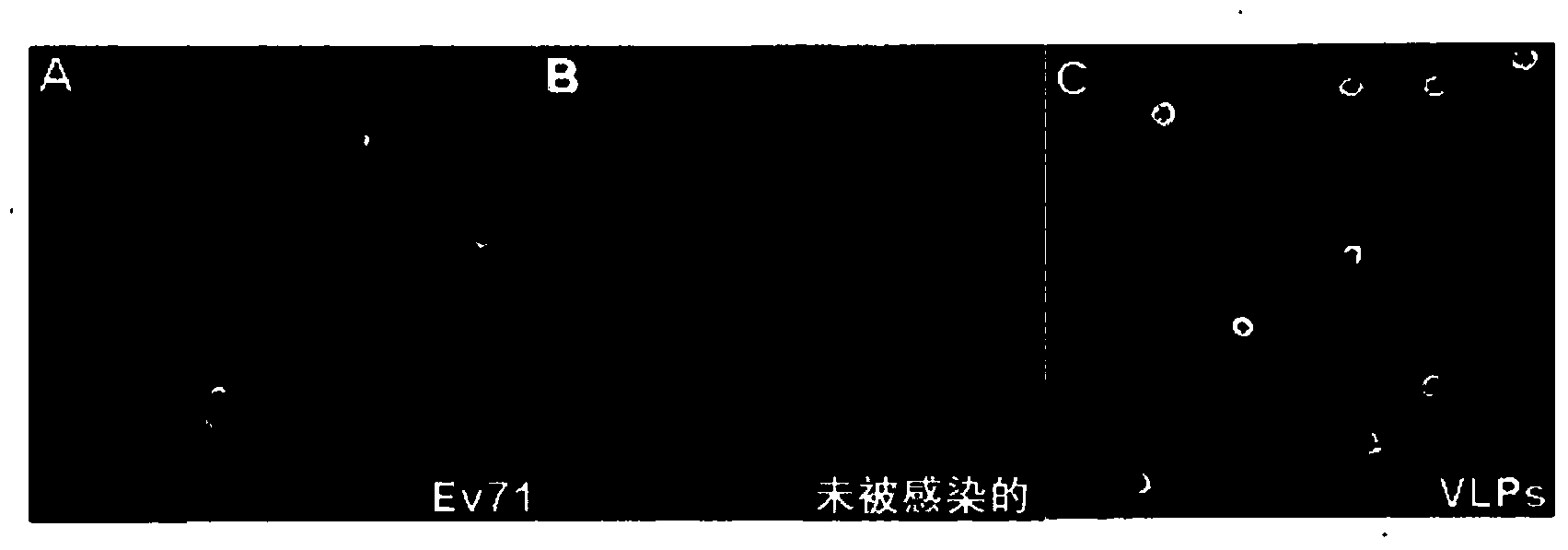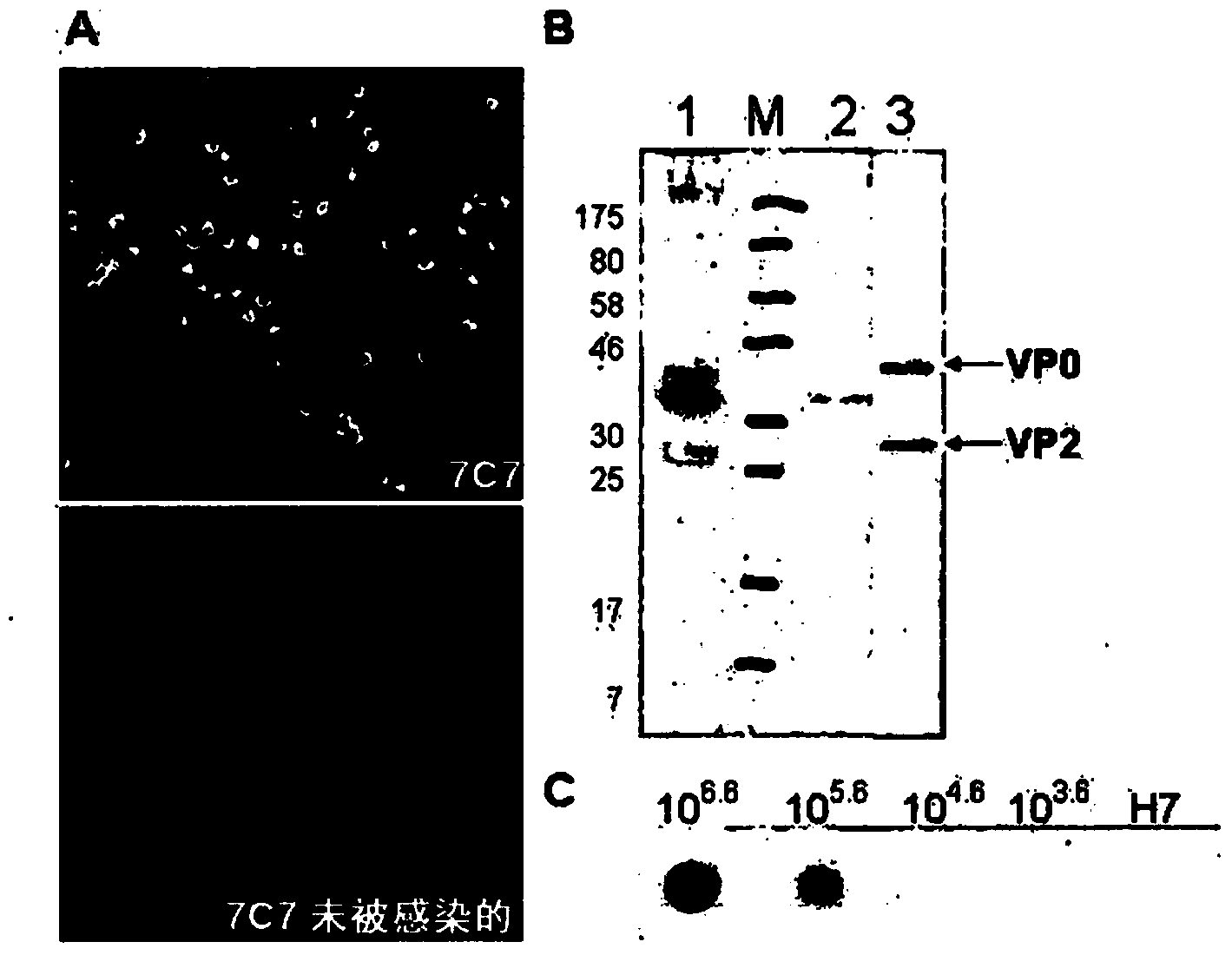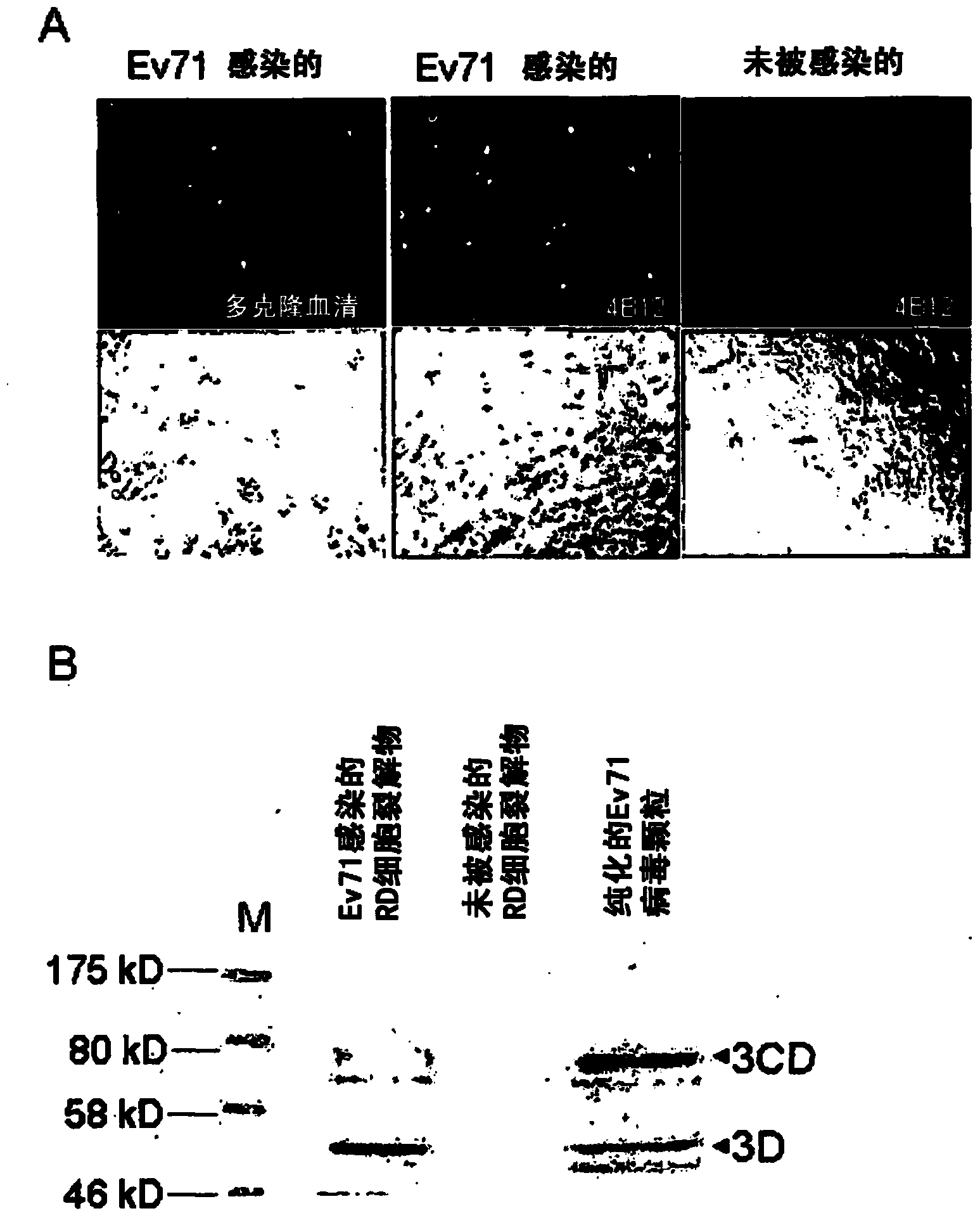Human enterovirus specific antibodies and their uses in diagnostics
An enterovirus, specific technology, used in disease diagnosis, antibodies, antiviral agents, etc.
- Summary
- Abstract
- Description
- Claims
- Application Information
AI Technical Summary
Problems solved by technology
Method used
Image
Examples
Embodiment 1
[0091] Monoclonal antibodies 1C6 and 7C7 were prepared and purified from intact EV71 virus.
[0092] Hybridomas secreting specific monoclonal antibodies were obtained from BALB / c mice that had been treated with purified EV71-B5 strain in 0.1 ml PBS (with an equal volume of adjuvant (SEPPIC, France) emulsified) two immunizations by intramuscular injection. Three days before the fusion of splenocytes with SP / 2.0 myeloma cells purchased from ATCC, they were given an intraperitoneal booster of the virus at the same dose. The hybridomas identified to produce specific antibodies were cloned by limiting dilution, and grown in 75cm 2 Expand in the flask. One week later, the hybridoma suspension was harvested and centrifuged at 400g for 10 minutes to pellet cell debris, then the supernatant was collected and stored at -20°C. The concentration of monoclonal antibodies was determined with a spectrophotometer (Nanodrop, DE, USA).
[0093] Antigen capture ELISA.
[0094] Use 100 μl of...
Embodiment 2
[0100] Preparation and purification of recombinant 3CD from EV71C4 subtype
[0101] The nonstructural protein 3CD from the EV71C4 subtype genome was expressed and used as an antigen to generate monoclonal antibodies. This 3CD DNA was amplified by a synthetic gene designed based on the published sequence of the EV71C4 subtype genome (Fuyang-08). This sequence was assigned accession number EU703813.1 by NCBI and cloned into pGex-4T-1 vector and transformed into E. coli. Total lysates of induced and uninduced cells were analyzed by SDS-PAGE, where expressed 3CD-GST fusion protein could be detected at 98.5 kDa. The fusion protein can be enriched by extraction with 8M urea and is GST positive by Western blotting. The enriched protein was then purified by gel cleavage and the concentration of recombinant protein was determined by BCA assay.
[0102] Production of monoclonal antibody against EV713CD
[0103] injected protein
mouse number
first injection
first...
Embodiment 3
[0108] epitope Figure 7 C7
[0109] To characterize the identity of the 7C7 epitope, the VP2 protein was fragmented into GST-tagged contiguous overlapping peptides and cloned into the pGex-4T-1 vector, expressed in E. coli BL21 cells and western blotted the protein using monoclonal antibody 7C7 detected in the blot. The gradual reduction in fragment length resulted in the recognition of the 7C7 linear epitope mapped to amino acid positions 142-147 of the VP2 protein or amino acid positions 211-216 of the EV71 open reading frame. like Figure 4 As shown, the minimal epitope consists of 6 amino acids EDSHPP (B5) (SEQ ID NO: 1) or ENSHPP (A, CA16) (SEQ ID NO: 2).
[0110] Epitope mapping of monoclonal antibody 4B12
[0111] To characterize the identity of the 4B12 epitope, the 3CD protein was fragmented into GST-tagged contiguous overlapping peptides and cloned into the pGex-4T-1 vector and expressed in E. coli BL21 cells. like Figure 5 As shown in C, a gradual decrease i...
PUM
 Login to View More
Login to View More Abstract
Description
Claims
Application Information
 Login to View More
Login to View More - R&D
- Intellectual Property
- Life Sciences
- Materials
- Tech Scout
- Unparalleled Data Quality
- Higher Quality Content
- 60% Fewer Hallucinations
Browse by: Latest US Patents, China's latest patents, Technical Efficacy Thesaurus, Application Domain, Technology Topic, Popular Technical Reports.
© 2025 PatSnap. All rights reserved.Legal|Privacy policy|Modern Slavery Act Transparency Statement|Sitemap|About US| Contact US: help@patsnap.com



